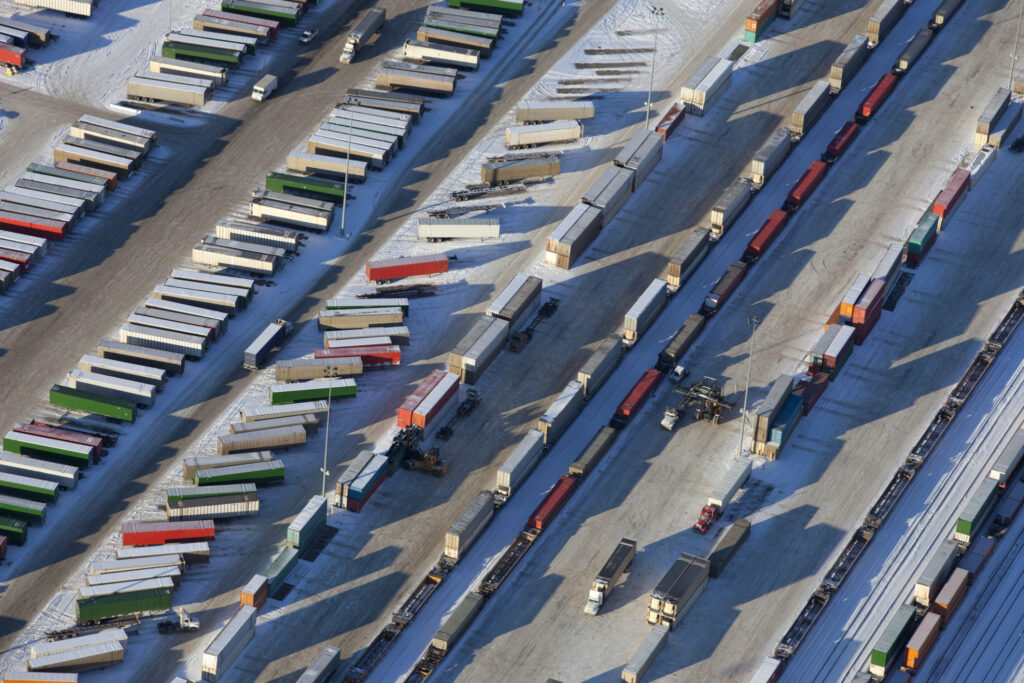4 things to include in a truck yard safety plan
While a detailed fleet yard safety plan is designed to predict and prevent accidents, the needs vary depending on individual characteristics and hazards.
Bigger fleet yards represent more details to establish proper and predictable traffic flows, explains Evan Edbom, vice-president of people, safety and culture at Sutco Transportation Specialists. He also emphasizes seasonal updates, with some rules revised more frequently than that.
Detailed up-to-date plans should be presented during orientation sessions, adds Ben Scipione, director of health and safety at Paramount Safety Consulting. Familiarizing truck drivers with a yard’s layout and rules before arrival can minimize congestion and accidents alike.

Each of them says safe and efficient yards can be achieved if safety plans include the following:
1. Job hazard analysis
A job hazard analysis addresses different types of hazards throughout the yard — like moving vehicles, debris, holes or uneven ground, overhead wires, poor lighting, or exposure to hazardous materials, Edbom says. He believes these hazards should be outlined on the yard’s map, along with the steps to help avoid them.
Risk assessments include particular tasks, too, Scipione adds. For example, when it comes to forklifts, the safety plan should include everything from the list of required equipment and its limits, to required training, and things to know about designated working and walking areas.
While Scipione believes truck drivers should always get out of the vehicle and wait in a designated area during loading, accompanied by a company representative, Edbom believes every yard should evaluate and establish its own protocols.
2. Mapped signs and floor markings
Mapped signage and floor markings are essential for preventing yard congestion and segregating people from equipment, Scipione says. Identifying designated areas for tasks like tarping, along with related physical barriers, is one example of that commitment at work.
Sometimes neighboring properties might affect visibility, Edbom adds, highlighting the importance of considering neighboring infrastructure and identifying potentially affected areas.
3. Protocols for drivers who work alone
Hazards are not limited to busy yards. Edbom recalls an incident when someone working a night shift slipped, fell, and severely injured their ankle.
“Luckily they were able to climb or, rather, crawl back to their truck and use communication devices to ask for help,” Edbom says. If not, they could have been sitting in the yard all night since other trucks weren’t coming.
Drivers are often isolated when they work, and this is particularly common in smaller yards where traffic is light. Even bigger yards can be loud and crowded, and an injured employee’s call for help might go unnoticed. It’s why Edbom recommends detailed step-by-step guides that will enable drivers to perform tasks safely by themselves.
Response procedures and local emergency phone numbers are needed should an accident occur.
“If someone is incapacitated in any way, how are we going to find that out? Is it waiting for the next person that might be hours behind? Or is there a way to dispatch and monitor them to know that they are safe, knowing how long that might take? Is there a communication method with that individual driver or not,” says Edbom, noting these issues are often overlooked in safety plans.
4. Accountability, enforcement, and punitive measures
No matter how good and detailed the plan is, Scipione says it will be “a bunch of kids playing in the sandbox, doing whatever they want” unless rules are enforced. He believes making sure the rules are followed properly is as important as having those rules in place.
Edbom agrees, saying that having people assigned to different tasks around the yard will help ensure proper supervision.
He adds that enforcement comes with accountability, which to him differentiates a poorly maintained yard from a safe and highly functioning facility. It’s why the safety plan should include detailed steps and procedures for workers to report hazards or incidents, as well as the names of those responsible for reacting.
“I’ve seen in the past things as simple as potholes in a yard that had been brought to the attention of the supervisor. And those remained unfixed, leading to multiple twists that are broken ankles. And those are significant incidents.”
Scipione says if control measures are not followed, disciplinary actions should be taken. However, while it might be easier for owners to enforce rules on the employees, controlling third-party drivers might get tricky.
This is why safety plans and carrier contracts should include punitive measures specific to each offence, he adds. Drivers need to know the consequences of breaking the rules and be banned from a site if they fail to follow instructions.
Have your say
This is a moderated forum. Comments will no longer be published unless they are accompanied by a first and last name and a verifiable email address. (Today's Trucking will not publish or share the email address.) Profane language and content deemed to be libelous, racist, or threatening in nature will not be published under any circumstances.